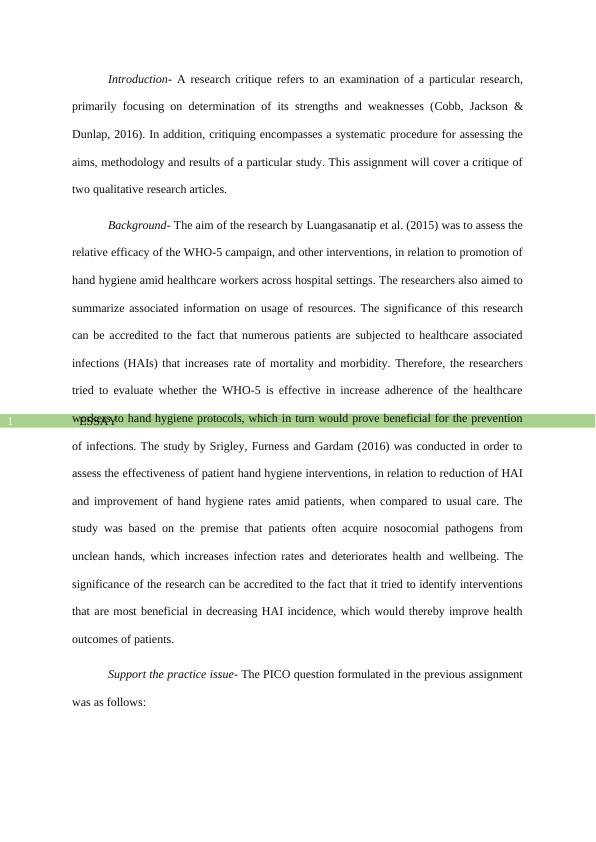Introduction to Nursing Research | Essay
Use this document to organize your essay. Successful completion of this assignment requires that you provide a rationale, include examples, and reference content from the studies in your responses.
6 Pages1532 Words17 Views
Added on 2022-08-28
Introduction to Nursing Research | Essay
Use this document to organize your essay. Successful completion of this assignment requires that you provide a rationale, include examples, and reference content from the studies in your responses.
Added on 2022-08-28
ShareRelated Documents
End of preview
Want to access all the pages? Upload your documents or become a member.
Evidence-based practices in nursing-Hand Hygiene
|14
|2383
|95
Facilitation Plan Barriers Assignment Report
|1
|1368
|9
Is the use of alcohol based solution in hand washing more effective than soap and water hand washing in reducing nosocomial infection infections inside a nephrology unit of a hospital?
|1
|1182
|106
PUBH6005: Epidemiology PDF
|13
|3030
|55
HAND HYGIENE ASSIGNMENT 2022
|7
|1761
|26
Hygiene Practices Underlying And Prevention of Healthcare
|7
|1381
|8



